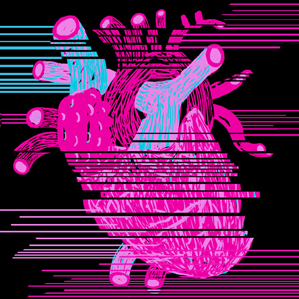Could We Make New Organs?
Right now, more than 120,000 people in the United States require an organ transplant to survive, but there are far fewer donors—in January, for instance, only 2,577 transplants were performed. That’s why some scientists have been exploring the prospect of using 3-D printing or related technologies to make organs in a matter of days. Not only would this shrink the gap between supply and demand, but it could eliminate the need for donors altogether. And if built using a patient’s own cells, printable organs could also reduce the risk of transplant rejection.

Scientists are not close to this goal, but they are making steps in the right direction—such as printing accurate models of organ shapes and building passages for blood flow.
Bio-inks
Research into printable organs falls within the broader field of bioprinting: the printing of any living structure made of cells. The most basic level of organ design begins with very thin, printed tissue that can be used to create a scaffold, a model of an organ that can’t yet function on its own but is more than just a plastic replica. In their early days, printed scaffolds were made from a synthetic material, and living cells were added later. But in the early 2000s, Anthony Atala, director of the Wake Forest Institute for Regenerative Medicine, helped streamline this process by developing a 3-D printer that could deposit the rubbery, synthetic model with tissue already layered on.
As bioprinting research pushes forward, the major challenge is no longer just creating these organlike structures but, rather, keeping them alive. Cells are incorporated into bio-inks that are printed layer by layer to create a swath of living tissue. It’s the same idea behind the back-and-forth motion of an ink cartridge in a traditional printer. But only cells printed on the outermost layers of the tissue can freely access oxygen and expel waste—processes vital to cell survival. Cells on the innermost layers suffocate and die.
The solution is to print not just a scaffold but also a tissue’s vasculature—a system of increasingly small pathways that can reach the innermost layers of cells, delivering blood and oxygen and carrying away waste.
Incremental progress
In 2014, Jennifer Lewis, a professor of biologically inspired engineering at Harvard University, successfully began printing vasculature in her lab. The main focus of Lewis’s research for now is on using 3-D-printed tissue equipped with blood vessels to test potential drugs for chemical toxicity in living tissue.
In hopes of making another step toward printing a fully functioning organ, Lewis is working on printing small regions of organs. Right now, she’s designing nephrons, the tiny units that make up the kidney: they allow the organ to remove waste from the body and filter blood, among other vital processes. Before Lewis can print a kidney, she has to figure out how to print a single nephron. But that “is at best still only a millionth of a kidney,” she cautions. “That’s the scale that this field is at right now.”
“I personally believe that at this point in history, organ printing is like a moon shot,” Lewis says. “We should drive toward that goal, no question about it, but we’re far away. We’re really far away.”
The Takeaway:
It will be decades at best before a synthetic, printed organ can be transplanted into a human.
Do you have a big question? Send suggestions to questionoftheweek@technologyreview.com.
Keep Reading
Most Popular
Large language models can do jaw-dropping things. But nobody knows exactly why.
And that's a problem. Figuring it out is one of the biggest scientific puzzles of our time and a crucial step towards controlling more powerful future models.
The problem with plug-in hybrids? Their drivers.
Plug-in hybrids are often sold as a transition to EVs, but new data from Europe shows we’re still underestimating the emissions they produce.
Google DeepMind’s new generative model makes Super Mario–like games from scratch
Genie learns how to control games by watching hours and hours of video. It could help train next-gen robots too.
How scientists traced a mysterious covid case back to six toilets
When wastewater surveillance turns into a hunt for a single infected individual, the ethics get tricky.
Stay connected
Get the latest updates from
MIT Technology Review
Discover special offers, top stories, upcoming events, and more.